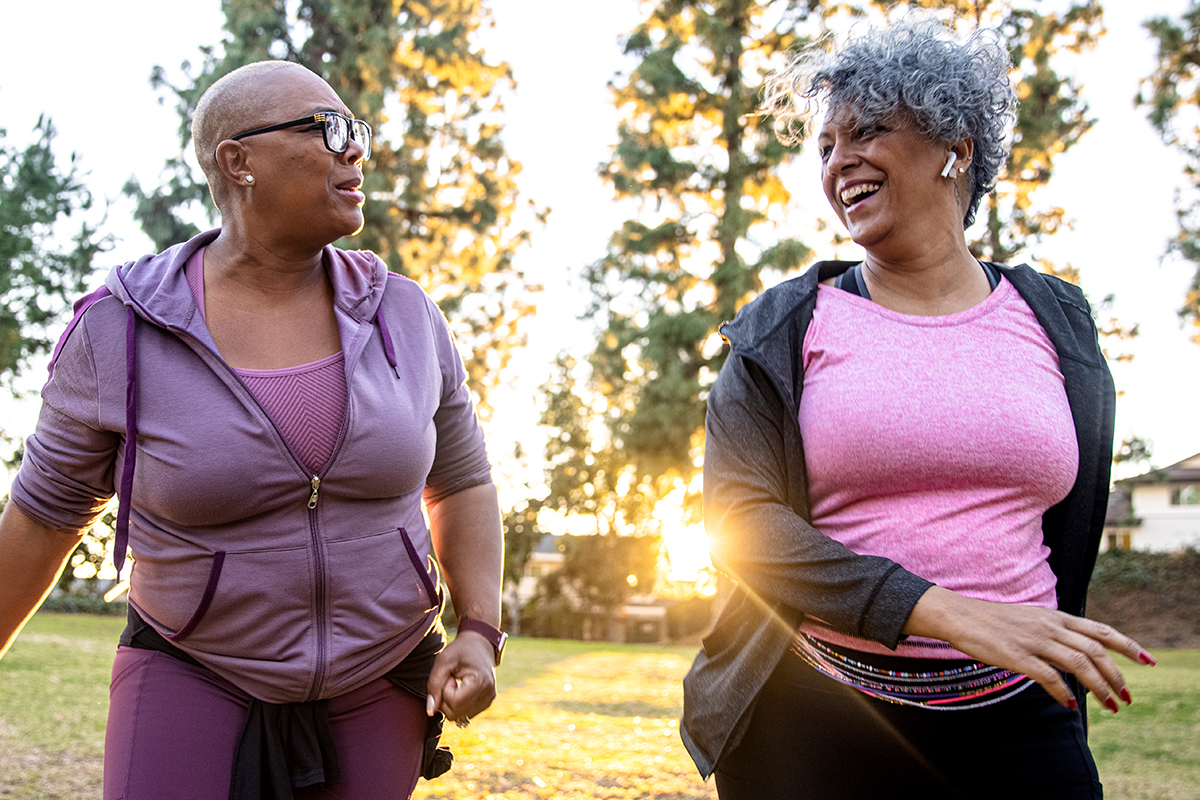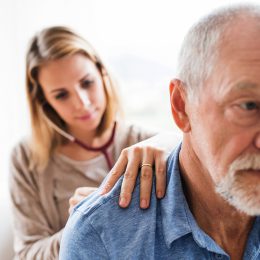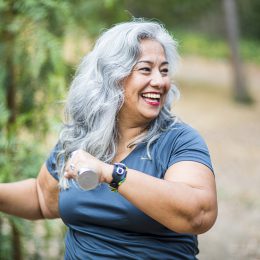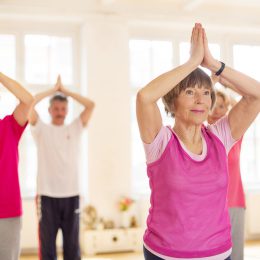7 Tips for a Safe and Full Recovery After COVID-19
You had COVID. Now what? Here’s what to focus on in the weeks ahead to stay strong, physically and mentally.

Every COVID-19 experience has one thing in common: unpredictability.
Some people bounce back quickly after a few days of discomfort, while others feel lingering symptoms for weeks—or even months—after a severe bout of breathing problems, nausea, fever, and fatigue. Scientists are still learning why the virus affects different people in dramatically different ways, but there are a few things we know about what can impact your recovery.
“How quickly or easily you recover from COVID-19 partially depends on your health before getting the virus,” says June M. McKoy, M.D., an internist-geriatrician and associate professor at the Feinberg School of Medicine at Northwestern University. That’s true for any acute serious medical condition, she says, but being in good health with few-to-no medical conditions doesn’t guarantee COVID-19 and its aftermath will be a breeze.
Another thing that impacts recovery: whether you were hospitalized.
“We already knew pre-COVID that if you come to the hospital and are in the intensive care unit (ICU) for a long period of time—two weeks or more—you get really deconditioned,” says Christian Sandrock, M.D., director of critical care and professor of medicine at UC Davis Health. This deconditioning (loss of both muscle strength and cardiovascular fitness) happens in all age groups, but it’s accelerated in older adults, he says.
If you spent time in the ICU with COVID-19, you may fare better in a rehabilitation program, Dr. McKoy says. Your doctor can help determine if that’s the right decision for you (more on that below).
What if you weren’t hospitalized? It’s still important to pay extra attention to how you recover. Here are a few things to focus on in the weeks ahead.
1. Monitor Your Symptoms—and Recognize Red Flags
Some people who get COVID-19 may experience lingering symptoms such as fatigue, cough, or joint pain for months after the initial illness, according to the Centers for Disease Control and Prevention. This can make it hard to know if you’re truly on the path to recovery.
Page Break
“Symptoms may get slightly better or worse day-to-day in the weeks after COVID-19,” Dr. Sandrock says. That’s normal, but there are a few warning signs worth calling your doctor right away, including:
• Chest pain or pressure
• Trouble breathing
• Fatigue that’s so bad you can’t get through daily activities
• New or prolonged confusion
• Pale, gray, or blue-colored skin, lips, or nail beds, depending on skin tone
Don’t hesitate to check in with your doctor if any other symptoms are getting worse or concern you. “It’s always better to err on the side of caution,” Dr. Sandrock says.
2. Ask Your Doc If a Rehabilitation Program Is Right for You
Even if you weren’t hospitalized, if you experienced a longer illness (more than 10 days) or feel very fatigued and winded after mild exertion like walking, a formal rehab program may be the best way for you to safely regain your endurance.
“People who go through an exercise rehab program after being ill tend to get better faster,” Dr. McKoy says. She recommends subacute rehab (SAR), which is a short-term inpatient program that often includes one to three hours of rehab per day, at least five days per week.
This kind of short-term rehab is typically paid for by Medicare or a Medicare Advantage program, but financial coverage and requirements vary so always check with your provider first. If it’s not covered, ask about a “COVID waiver,” Dr. McKoy suggests. Some insurance companies make special exceptions and cover care they normally wouldn’t, she says.
3. Expect a Slow and Gradual Return to Exercise
Exercise is an important aspect of recovery, Dr. McKoy says. But it may look very different from your pre-COVID routine for a while.
“Don’t assume you can jump back into the same intensity you could handle before,” Dr. McKoy says. Start slow and expect to progress gradually. Low-intensity activities like walking, yoga, or tai chi are best until your body gets used to regular movement and is ready to ramp things up.
How will you know when you’re ready? “Keep tabs on how your body reacts to movement,” Dr. Sandrock says. For example, if walking or yoga used to feel challenging but no longer requires much effort, you might be ready to introduce moderate exercise, like bodyweight strength training, brisk walking, or the elliptical.
Wearing a device to track your heart rate and oxygen levels can also help you gauge when you’re overdoing it, Dr. Sandrock says. “If you notice your heart rate spikes or your oxygen level drops below 90 percent when you’re doing something new, that’s a red flag your body is working harder than it should be and you need to slow down.”
Plus, for more tips, check out our guide to get back to exercise safely after COVID-19.
4. Keep Your Brain Busy
Recovering from COVID-19 can be profoundly demoralizing, Dr. Sandrock says. That’s especially true if you were active before and are now limited in what you can handle while you recover.
His recommendation: Keep your mind busy with brain games like crossword puzzles and sudoku to help combat both the restlessness you may feel and common COVID-19 side-effects like brain fog and confusion.
If brain games aren’t your thing, try finding free guided meditations online or watching interactive TV shows (think: game shows like “Family Feud” and “The Price Is Right”). Shows and movies that bring back wonderful memories or make you laugh can also help keep the brain from getting foggy, Dr. McKoy says.
Subscribe to our newsletter
It's quick and easy. You could be one of the 13 million people who are eligible.
Already a member? Click to discover our 15,000+ participating locations.
Follow Us
5. Connect with Friends and Loved Ones
“Human beings need connection; we crave it,” Dr. McKoy says. “Being mentally and cognitively well will help your physical health.”
The opposite is also true: Research published in Global Health Research and Policy shows social isolation and loneliness are major risk factors for poor physical and mental health. “If you’re recovering from COVID-19, this could impede your progress,” Dr. McKoy says.
It’s harder to feel connected while maintaining physical distance, but video calls using Zoom or FaceTime or regular phone calls can all make a difference in your mood. Not comfortable using Zoom? Check out these tips and tricks to make your calls easy and successful.
6. Nourish Your Body
Some people with COVID-19 experience nausea, vomiting, or loss of appetite, Dr. Sandrock says. These symptoms can make it harder to get all the calories, vitamins, and minerals your body needs to function well, which may slow down your recovery.
You don’t need to do anything drastic: Simply focus on eating regular meals throughout the day that include a wide variety of nutrient-rich foods, like fruits, vegetables, whole grains, nuts, lean meats, and fish.
And don’t forget to drink plenty of water. Hydration plays a major role in immunity, and it can also help clear your lungs of excess mucus that may be lingering after your illness.
7. Prioritize R&N
That’s rest and nature. Sleep is essential for helping your body recovery from any illness, including COVID-19, Dr. McKoy says. Aim to get at least seven hours of sleep each night, more if possible.
Also, try to get outside every day. Spending time in the sunshine and fresh air is a health and mood booster, Dr. McKoy says, especially if you’ve been cooped up inside for a long time. A growing body of research shows time in nature can increase emotional well-being, reduce stress and anxiety, and improve physical health by reducing blood pressure and muscle tension.
Go for a leisurely walk outside to combine the benefits of fresh air and exercise. “If you can walk in a park that has benches, that’s great,” Dr. McKoy says. “That way, you can walk a bit, then rest when you’re feeling fatigued and need a break.”
Take Your Favorite SilverSneakers Classes Online!
SilverSneakers members can access live fitness classes and wellness workshops through SilverSneakers LIVE. See the latest schedule and RSVP for classes here.
Not a member? If you have a Medicare Plan, it may include SilverSneakers—at no additional cost. Check your eligibility instantly here.




